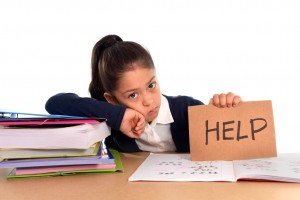 Barbara Hodge[/caption]
Barbara Hodge[/caption]
CONGRATULATIONS BARBARA!
We would like to recognize our wonderful faculty member,
Barbara Hodge, who was recently honored at the 2015 NDTA Annual Conference.
The Award of Excellence is the highest honor NDTA bestows upon an individual. It recognizes people who have devoted extraordinary time, energy, and commitment to NDT/Bobath and NDTA
Barbara spoke at the conference luncheon and the following article appears in the NDTA NETWORK • MAY/JUNE 2015
The observation, analysis, and handling skills I received during my basic NDT /Bobath training have afforded me so many opportunities. I have worked in schools, clinics, and homes, and I have taught worldwide. When my own children were small I treated children in our home –my children played with the siblings, or we played together; it was fun.
Over the years I have taught many courses. In the last 15 years this has often been with my friend and mentor Linda Kliebhan, either in the US or through our program in Ukraine, and currently in Chile. Sometimes, under the auspices of The World Wide Orphans Foundation, but always at the invitation of Dr. Mary Margaret Windsor, OTR, PhD, I have had the opportunity to work in Vietnam, China, Bulgaria, and Romania.
I have also had several visits to Haiti and once to Guatemala.
In Romania, occupational therapy is a newly emerging profession. They are about to
graduate their first class of OTs. Meeting this small group and teaching them some NDT skills reminded me of the development of NDTA in the seventies when we were such a relatively small, homegrown group.
These overseas opportunities have taught me so much. When I get frustrated with the pace of change here, or the hours spent on documentation, I think of some of the scenarios I have seen elsewhere. A huge room full of at least 150 beds, all holding
children or young adults clad in bright orange PJs. These are children whose bodies have lost all alignment and therefore the potential for any functional activity or participation, some who in the US would be seen as having mild diplegia and probably walking on a posterior walker, but most cannot actually get out of bed. Or children in other countries who cannot go to school with their siblings unless they can walk independently, partly because of the cultural expectation, partly the complete inaccessibility of the buildings.
Much of this we had in the USA and the UK about 30 or 40 years ago.
We did not know at the time that we were going to need evidence based research, and nobody collected it as we made change. What I believe did happen over time was that the Bobath influence worked its way into some aspects of standard practice. Expectations of what our clients could achieve functionally began to grow.
An expectation to impact on the impairments (body structure and function) to develop functional activities and societal participation became implicit in what we did, although we did not have those terms. I learned those basic concepts in the 70s from the Bobaths. What I see now, as we have learned so much more about posture and movement, about motor learning , about functional task analysis, is that we have a much more structured and consistent way to achieve those early ideals.
As Dr. Chapparo talked about this morning, there is undoubtedly, currently a heavy focus on the participation domain of the ICF, as there should be. My fear is that as therapists we seem to let the pendulum swing completely with every change. We are inclined to throw out the baby with the bathwater? We did this with the issue of a primary problem not being weakness, it was tone, then we went back to weakness. Surely now we acknowledge that it is neither one nor the other of these, it is both, and the interaction of the two. Our treatment needs to address both. Then we had impairments versus function. Get length, or just let the client practice a skill any way they can. Same answer – we need to link both. Currently I believe we need to remember to keep both ends of the ICF in mind. Assess and address the impairments in order to be able to promote chosen functional activities and participation –THAT IS NDT.
Dr. Bobath referred to what they did as a “living concept” that would develop as more was learned about posture and movement. He was dead right; we are and we do evolve. By definition that is what a theory is, it reflects current knowledge supporting a concept.
The most common feedback I hear after the pediatric certificate course is that it changes the whole way a therapist looks at the child and plans a treatment.
What we do works. Providing enough of it and the best model of delivery is a challenge. We need to find a way to fund research and develop evidence for the efficacy of NDT. This is why Dr. Kate Bain and Suzanne Davis Bombria’s plan for a randomized
controlled study is so exciting, why the research of people like Deborah Evans-Rogers, Margo Haynes, Mary Rose Franjoine, and others, is so important.
A parent once told me that the difference between what I did and others had done in therapy was that I worked with her child; others worked on her child. That is what we do, we play with children. It is play with a purpose. When Linda and I were in Ukraine we were discussing some concerns with a professor of psychology from the University of Lutsk. The issue was people from other countries coming to Ukraine and trying to independently fix things. They have a saying in Ukraine which translates to “Don’t do for us, without us.” In other words, their being involved in the process, in the context of their culture, was what was going to make this work for them. The same is true of the families we work with. Both of these stories sound to me as though participation is what they were talking about, something that is one of NDT’s basic concepts, along with addressing the underlying impairments to make sustainable change. We are so fortunate that this is what we get to call our occupation!
Again, I thank you for this incredible honor. ■
By Barbara H. Hodge
Permission is granted to Education Resources to reprint “Award of Excellence Outtakes: NDTA Conference 2015” by Barbara Hodge by the
Neuro-Developmental Treatment Association’s Network editor.
Dynamic evidence based courses taught by Barbara Hodge:
Pediatric NDT Treatment Intensive
NDT and MFR for Children with Neurological Disa
bilities
Barbara will also be a keynote speaker at the Education Resources Annual Conference
Therapies in the School
“Gaining Postural Control for Successful Participation in School”
and
“The Moderately-Severely Involved Child: Integrating NDT and MFR into a School Based Program”
November 19-20, 2015 – Nr Boston, MA
]]>



 Barbara Hodge[/caption]
Barbara Hodge[/caption]